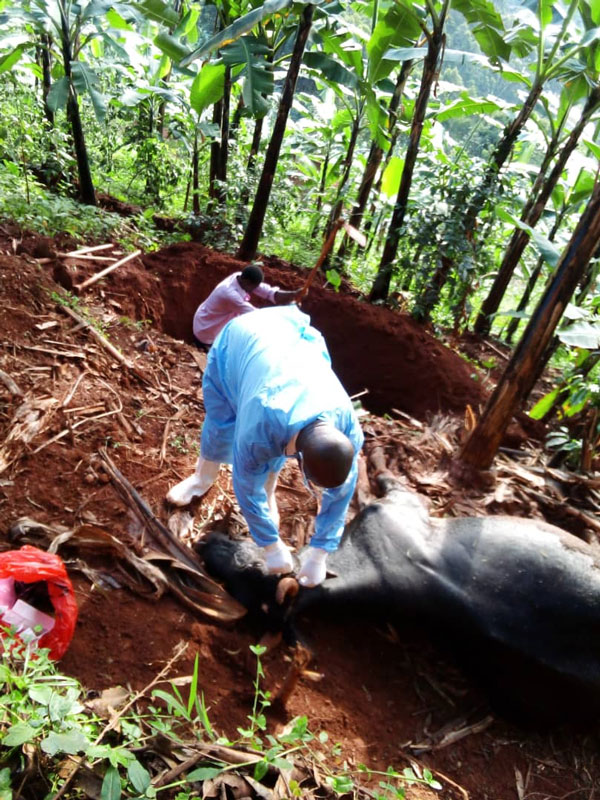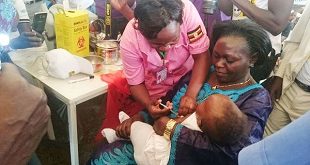
Kyotera , Uganda | THE INDEPENDENT | Livestock farmers in Kyotera district have expressed concern over the inappropriate disposal of carcasses after cattle succumb to anthrax.
For close to two months now, Kyotera district has been battling a rare outbreak of anthrax, which compelled the authorities to declare a total livestock quarantine, to contain the disease, which had also spilled over into human beings.
However, the farmers in Kabira and Kakuuto sub-counties that are still under total livestock quarantine are afraid that the disease may stay longer in the area, due to the poor disposal of the carcasses in the community.
Enos Mugisha a cattle keeper in Bukaala parish, Kabira sub county indicates that people have buried carcasses in grazing fields hence exposing more herds to risks of contracting the virus. He observes that because farmers have lost many animals, they have become so fatigued and can no longer dig pits with the required depth to bury the carcasses.
As a result, according to Mugisha, dogs and other wandering animals are finding it easy to exhume the carcasses hence scattering the meat in the community, which increases the risks of disease spread.
Richard Kalanzi, the Chairperson Kabira Sub-county has expressed fear of a second wave of the disease spillover into human beings, arising from tendencies of complacency towards the disease that are growing among communities.
In a period of six weeks since November last year, Kyotera district had registered 17 human deaths and several cases of hospitalization that were related to anthrax, after it emerged that the victims had either been in contact with the infected animals, touched their products or consumed their meat.
Kalanzi says, apparently the community does not have any personal protective gear and people are handling the carcasses with bare hands which exposes them to risks of infection.
Meanwhile, the Uganda Red Cross Society has sent in a surveillance team that has embarked on a community sensitization exercise as a response to the disease’s spread.
Doctor Steven Kasumba, the Veterinary Officer at the Red Cross Society says they have teamed up with the local public health and veterinary officers to support the ongoing surveillance and response interventions, aimed at defeating the disease.
While addressing a community meeting at Bukaala village, Dr. Kasumba urged the residents to refrain from carrying the carcasses but to ensure they are buried or completely burnt from their points of death.
John Lutaaya, the Kyotera District Veterinary Officer indicates that they are closely monitoring the situation as they wait for the mass livestock vaccination exercise as promised by the government, which will provide a lasting solution to the problem.
****
URN
 The Independent Uganda: You get the Truth we Pay the Price
The Independent Uganda: You get the Truth we Pay the Price



Anthrax
Caused by a germ called Bacillus anthracis
One of the germs that have a living and resting stage
The resting stage( endospore) is known to be ” hardy”, not easy to kill
The lat time we knew about this germ
It would be buried in Lime, the ditch had to be deep
The Alternative is to use very high temperature (incineration)
From this very magazine we have seen supervised burial by individuals donning protective gear in a region close to Rakai
Wanuheresi, weyayu?